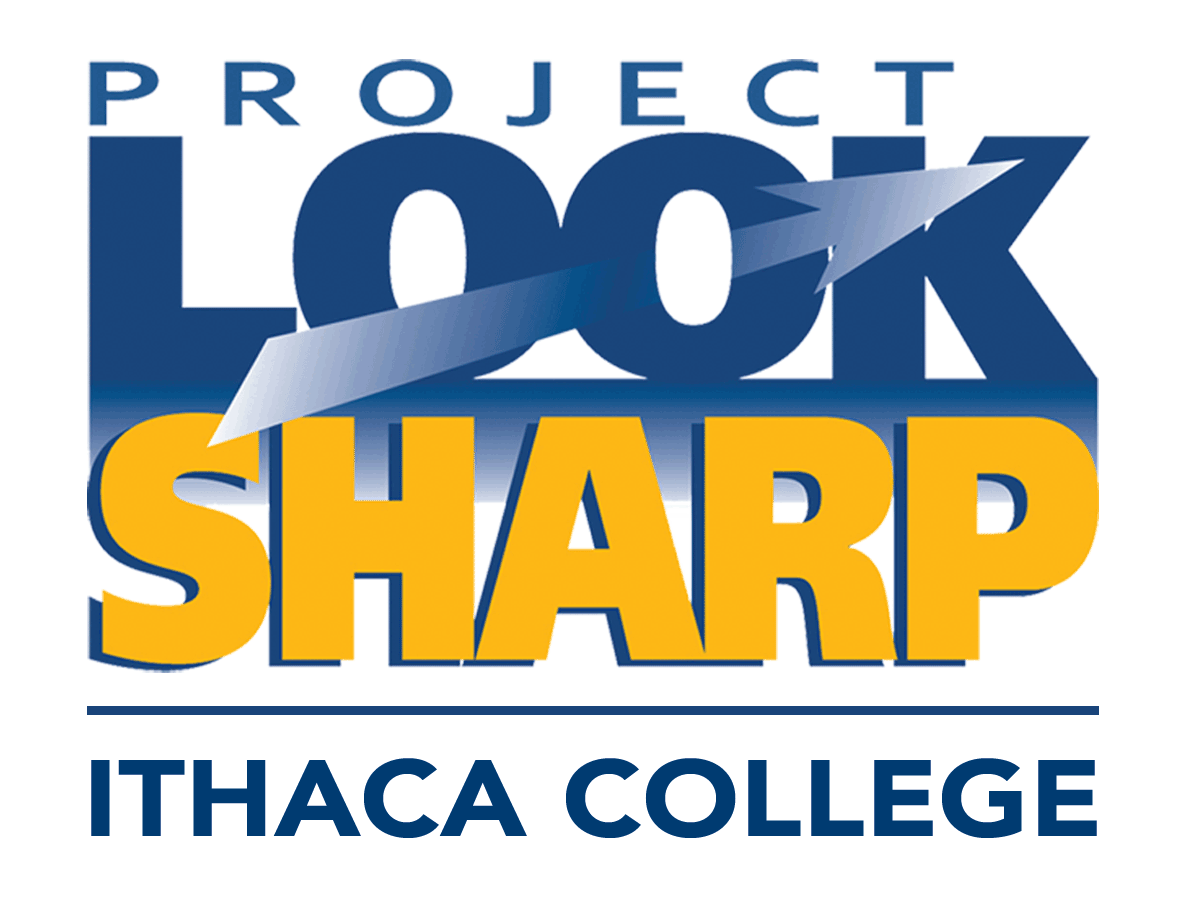Librarian-Created Materials
We have worked with many enthusiastic librarians over the past 20 years, several of whom have authored media literacy lessons that are featured on our website. Many have also created their own media literacy materials (including bookmarks, flyers, displays, websites, media literacy lessons, and even video games) for use with their students or other constituents.
Online Games
 Kelly Deltoro-White, Mount Morris Library
Kelly Deltoro-White, Mount Morris LibraryKendyl Litwiller-Sutherby, Naples Library
Stacey Wicksall, Macedon Public Library
This online game was created by a group of public library directors who participated in FL-DLI, with the goal of making learning about and applying digital information literacy skills interactive and fun. The game focuses on a story told by Aunt Sage about seeing a sea monster in Lake Ontario, giving students opportunities to seek out information from different sources (e.g., Aunt Sage’s diary, web resources) and to question aspects of the story.
Here is a link to the interactive game:
Bulletin Board Displays
 Michele Coolbeth
Michele Coolbeth East Syracuse Elementary School
For the Martin Luther King, Jr. celebration at their school, one of our ML3 library leaders created a wonderful display of stamps featuring Martin Luther King from around the world, coupled with key questions for students to ask about the stamps and the images on them.
- Who made these?
- What are the messages about Martin Luther King, Jr.?
- How did the artists communicate their messages?
- How do these images make you feel? Why?
- What questions do you have?
Flyers

Nicole Iverson
Rome Central School District
Nicole Iverson has been a librarian for almost 20 years, having started her career in public librarianship. She is a librarian a 9-12 high school in the same district that she graduated from many moons ago.
As one of our ML3 library leaders, Nicole wanted to create something printable about media literacy resources that she could stuff in teacher's mailboxes. Getting the word out about Project Look Sharp and all the ready-made lessons it offers was her primary focus. She also wanted to stress the "why":
- WHY is media literacy so important?
- WHY should media literacy skills be integrated into content areas?
Her hope was that the flyer would open the doors to collaboration and discussions about media literacy within her high school.
Bookmarks
 MaryAnn Moore,
MaryAnn Moore, ATTAIN Lab Coordinator
SUNY Research Foundation
The ATTAIN Lab project (Advanced Technology Training and Information Networking) offers technology training and an assortment of academic, occupational, and employability courses to NY State residents. MaryAnn also assists people with job searches and applying for jobs and created this bookmark as a take-away for participants in workshops that she facilitates for jobseekers to use online resources safely and wisely.
 Saru Haran,
Saru Haran,
Sri Vidya Temple Society
Saru joined the FL-DLI course because the Sri Vidya Temple library was expanding its work to reach Temple members around the world. The Temple was offering virtual classes through YouTube and other venues, but she found that potential participants were having difficulty understanding how to find and access the courses – and that the typical methods of outreach through email and flyers weren’t successful. She created a series of bookmarks in different languages (and in appropriate colors) for different audiences involved with the Temple. The back of each bookmark will include basic information about the courses, with specific step-by-step instructions for how to access them.
Media Literacy Lessons
We have had many librarians contribute ideas and materials that we’ve used in some of our free media literacy lessons on the Project Look Sharp website. A few librarians have gone further to author (or co-author) unique media literacy lessons which are published on our website. Here are some examples, with the links to those lessons.
Susan Allen
University of Buffalo
Censoring Seuss: Cancel Culture or Cultural Respect?
Joanne Church
Boynton Middle School, Ithaca NY
Green Transportation: Electric Cars vs. Bicycles
Young People Taking Action to Protect Our Warming Planet
Michele Coolbeth
East Syracuse Elementary School, East Syracuse NY
Discovering Ramadan
Beth Cuddy
Auburn High School, Auburn NY
Political Memes and Bias: What Resonates, What’s True and What Do We Share?
Sharon Fox
Anna S. Kuhl Elementary School, Port Jervis NY
What Can You Tell From a Book Cover?
Can You Judge a Book By Its Cover?
How Do I Choose? Picking the Right Book for Me
Maureen Gilroy
Fall Creek School, Ithaca NY
Benefits and Costs of Using Plastic Shopping Bags
Ban the Bag or Not? What Else Should We Know?
Arlene Laverde
Townsend Harris High School, Flushing NY
Global Perspectives Through Movie Posters
Roma Matott
Norwich School District, Norwich NY
Columbus “Discovers” America: What’s The Story?
